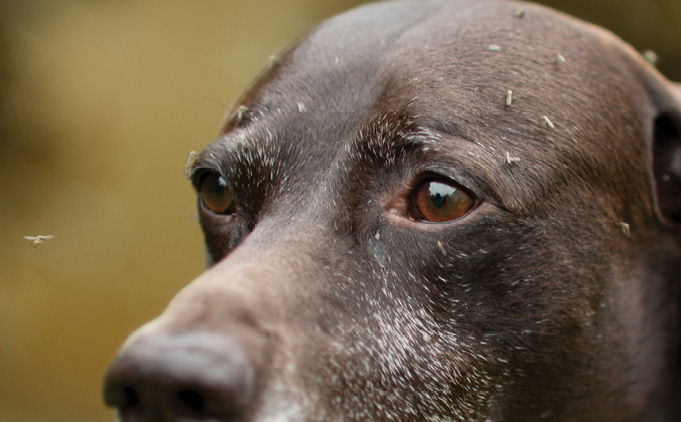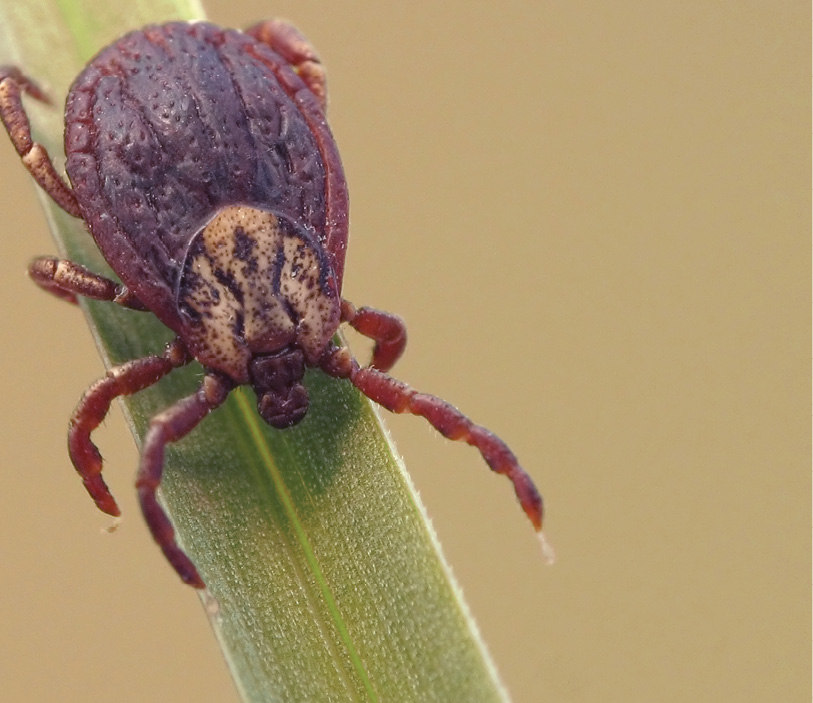TRENDS IN YOUR INBOX: Parasites Are on the Move

Parasites Are on the Move: Are You and Your Clients Ready?

To say a warmer world is a sicker world “paints the situation with too broad a brush.”
—RICHARD OSTFELD, PHD
As pet parasite problems pop up all over, experts suggest that everyone needs to up their game on what’s happening.
But what is happening? Is global warming the cause? Global temperatures in 2018 were “only” 1.5 degrees Fahrenheit warmer than the 1951 to 1980 mean.
“A degree or two doesn’t sound like a lot of global warming,” said Katharine Hayhoe, PhD, a climate scientist and professor at Texas Tech University in Lubbock, Texas. “Over the course of a single day, temperatures go up and down by a lot more than one or two degrees. So, what’s the big deal?
“Here’s the difference: We aren’t talking about the temperature of a certain place at a specific time. We are talking about the long-term average temperature of the entire planet, which, over human timescales, is as stable as that of the human body.
“Think of your body temperature or that of your pet’s. Then imagine it goes up nearly two degrees Fahrenheit—as the temperature of the earth already has. You start to feel it: You’re overheated, achy, tired. Your pet gets lethargic and stops eating. It’s because we’re running a fever. And that’s exactly what’s happening with the earth.”
So are changing weather patterns the reason for parasite movement?
Many Factors
“It’s complicated,” said Susan Paskewitz, PhD, chair of the Department of Entomology and director of the Upper Midwestern Center of Excellence for Vector-Borne Disease at the University of Wisconsin–Madison.
“There is clear indication that blacklegged ticks are moving into colder areas, such as Canada, as a result of warming climate. It is also reasonable to assume that the lone star tick range is restricted by climate and that movement north may be a result of warming,” she said. “But in the Upper Midwest and eastern United States, we are also seeing the blacklegged tick move south, so clearly climate isn’t the whole story.”
Paskewitz said she sees the recovery of formerly deforested areas now regaining their white-tailed deer populations as playing a role.
And though it may seem counterintuitive, increasing rainfalls flush stormwater management systems and usually reduce mosquito populations, explained Paskewitz. In contrast, drought can increase certain mosquito species, such as the ones that transmit West Nile virus, by increasing the proportion of habitats that hold stagnant, foul water.
“Complicated” also was the response of Richard Ostfeld, PhD, disease ecologist with the Cary Institute of Ecosystem Studies in Millbrook, New York.
To say a warmer world is a sicker world “paints the situation with too broad a brush,” said Ostfeld, who codirects The Tick Project with Felicia Keesing, PhD, of Bard College in Annandale-on-Hudson, New York. The five-year study is testing whether neighborhood-based environmental interventions can prevent Lyme and other tick-borne diseases.
Ostfeld would add that, at least for Lyme disease, 19 years of collected data there indicate that fragmented forests with high rodent densities and low numbers of resident foxes, opossums, and raccoons play a role.
What a warming climate does for ticks, he explained, is allow them more time to find hosts, survive, and maintain viability. With mosquitoes, it depends on the species and location. Certain populations, such as the tiger mosquito, benefit from warmer temperatures, which allow them to move north and northeast.
But that’s not all.

“In the past, we never saw heartworm.
Maybe one or two cases a year.”
—JACQUELYN SCHULTZ, OYSTER RIVER VETERINARY HOSPITAL
Hitching a Ride
Another change has emerged: animal transport.
More people are now traveling with their pets. According to the 2019–2020 National Pet Owners Survey, 45% of dog owners now take their dogs with them on the road when traveling for at least two nights. A quick online search found several hotel chains catering to pets and their owners.
More rescue pets are being transported between states and brought in from other countries. In April 2019, the American Society for the Prevention of Cruelty of Animals (ASPCA) announced that its national Animal Relocation Program had transported its 100,000th homeless animal from 16 states to shelters across 30 states since the program launched in 2014.
According to its website, it currently relocates more homeless animals than any other organization—usually moving animals from southern to northern states where they have a greater chance of being adopted. In 2018 alone, the ASPCA moved 40,314 animals across the country to find new homes.
In the Hospitals
What are veterinary hospitals seeing?
“In the past, we never saw heartworm. Maybe one or two cases a year,” said Jacquelyn Schultz, general manager at Oyster River Veterinary Hospital in Lee, New Hampshire. “I was running two hospitals in 2018, one in Maine and one in New Hampshire. At both hospitals, we’re now seeing an increase, at least four cases at each.
“Throughout the years, positive heartworm cases were always southern rescue dogs. After [Hurricane] Katrina, there was an influx of southern dogs shipped to New England. We had to set up new heartworm testing protocols with those particular dogs in mind,” she explained. “This year we saw two or three local-born dogs show up positive for heartworm.”

“One Asian longhorned tick coming to Colorado on a pet might not seem like a problem. The issue is that females of that tick don’t need a male to reproduce.”
—THOMAS MATHER, PHD
Schultz noted that the hospital is seeing “a lot more” tick-borne diseases, now has to handle the once-unusual task of pulling ticks off pets throughout the winter, and has seen the arrival of new ticks, such as the lone star.
“We have changed our heartworm testing protocol and are educating the clients a lot more about the increase in cases,” said Schultz. “We have always recommended a 4Dx test due to the prevalence of tick-borne diseases but have added a longer discussion on heartworm and its effects.”
Since the summer of 2018, pet owners in Calgary, Alberta, Canada, have been bringing in five times as many ticks as they used to, said Amy Matchett-Waterhouse, DVM, medical director and co-owner of AAHA-accredited VCA Canada Dalhousie Varsity Animal Hospital. The five-doctor hospital does not identify ticks but sends them to the provincial lab in Edmonton, which only lets them know if the ticks are Ixodes because the lab is screening for Lyme disease.
Matchett-Waterhouse admitted she has heard rumors at area veterinary meetings that more southern ticks have arrived in the area but has no personal experience with them. The hospital, she said, relies on the Worms and Germs Blog by Scott Weese, DVM, DVSc, DACVIM, and the University of Guelph Centre for Public Health and Zoonoses in Ontario for information pertaining to parasite prevalence in Canada.
At AAHA-accredited Mt. McKinley Animal Hospital in Fairbanks, Alaska, Krislyn DeLeon, DVM, reported that a lot of people there travel with their pets seasonally and with the military.
“In our area, the interior, we have not seen an increase in the incidence of ticks and heartworm (and fleas, for that matter) in pets who live here full time. The pets who have been diagnosed with heartworm disease at our hospital are pets who have traveled or relocated from the lower 48 states. The dogs who have been diagnosed with ticks have been exposed at boarding facilities where dogs new to the area were infested with ticks and exposed other local dogs.”
AAHA-accredited Fredonia Animal Hospital in Fredonia, New York, had its first encounter with a lone star tick last May, according to Sharon Redfield, practice manager.
“It was on a local dog. Fully fed, it had fallen on the dog’s foot during an exam. We had never seen one before and were not aware of any reported in the area. The dog and its owners had not traveled,” she said.
While familiar with blacklegged and brown dog ticks, she said, the hospital had no protocol established for the lone star.
Now, she said, “it’s here. It’s on our radar. We have to educate ourselves and our clients.”
The hospital has changed its protocol and recommendations for tick products and is making clients aware of tick safety through social media posts.
How did Redfield discover the tick was a lone star?
The self-described “tick nerd,” former science teacher, and mother of three boys said she submitted photos to the TickEncounter website.
 Identify and Locate
Identify and Locate
TickEncounter and the Companion Animal Parasite Council (CAPC) are two online resources that can help.
TickEncounter, operated by the University of Rhode Island Center for Vector-Borne Diseases, offers not only educational articles but also a free service called TickSpotters. That crowdsourced tick survey tool sources information on tick encounters from around North America and provides users with tailored risk-assessment reports.
Those who submit a tick photo and complete the submission form will be helping researchers track tick trends, explained Thomas Mather, PhD, director and University of Rhode Island professor. Usually within 24 hours of submission, TickSpotters responds by email with an ID confirmation, risk assessment, and best next actions. Sometimes people even learn that their “tick” is actually a tick lookalike, such as a spider beetle or a weevil.
The tool has brought in lots of information, ranging from the movements of blacklegged ticks as they spread across Michigan to the fact that while adult ticks are typically found on human victims in about a day, it typically takes 3.5 days for people to find the tick on a dog after it is engorged and pops through the dog’s fur.
Using the power of the crowd, TickSpotters is tracking the invasion of new species. Last summer, said Mather, the center received six requests in three weeks to help identify what turned out to be the Asian longhorned tick.
“TickSpotters have reported two new host records for this tick: an unhealthy gosling at a New York City rehabilitation hospital and a small flock of backyard chickens in Pennsylvania. Yes, most people think chickens eat ticks,” said Mather. “But with the Asian longhorned tick, the ticks are eating chickens.”
CAPC, founded in 2002 to increase awareness of the threat parasites present to pets and family members, is another resource.
Besides educational articles and videos, its Parasite Prevalence Maps show the proportion of pets who test positive for a given infection using available assays. The data can help veterinarians better understand the prevalence of parasites in a given practice area.
CAPC tracks more than a dozen factors, including temperature and precipitation, noted Robert Lund, PhD, a professor at Clemson University and CAPC board member. But what was a surprise, he said, was that “prevalence history is a better predictor of future prevalence than all of the other climate and economic factors that we look at.”
Season and Region
Your clients may be thinking that tick season is over because they can’t see any. But the ticks may be in their larval stage.
“Each stage of each species of tick has its own active season,” said Mather. “When the season for American dog ticks may be waning, the adult blacklegged ticks may be getting more active. It also depends on where you are in the country.”
In addition, he said, different stages in a tick’s life can affect humans and pets, such as dogs, differently. Most people get Lyme disease from a blacklegged tick in the nymph stage. But dogs are more likely to get the disease from the adult-stage tick.
The same type of tick in different parts of the country can be more or less likely to be infected, he noted. In the North, 40% to 60% of blacklegged ticks carry Lyme disease, while in the South, the percentage is closer to 2% to 5%.
Traveling with pets can put them at different risks. Mather gave the example of an Asian longhorned tick reported in Colorado. It turned out to have been brought there from New Jersey when a man took his dog along on a trip to visit family.
“One Asian longhorned tick coming to Colorado on a pet might not seem like a problem,” said Mather. “The issue is that females of that tick don’t need a male to reproduce. They lay fertile eggs. That will allow this tick to spread more easily.”
Takeaway Message
“Veterinarians need to start changing how they talk with their clients. They need to ask more leading questions,” advised Craig Prior, BVSc, CVJ, past president of CAPC. He offered these examples:
- Instead of asking if a patient is an indoor or outdoor pet, ask how much time the pet spends outside with daily exercise, visits to neighbors, and potty trips.
- When talking about parasites, ask the client what they know about one parasite or another.
- Ask clients what they are currently using for flea, tick, and heartworm preventives and when they last gave or applied it.
- Ask clients what their tolerance is for fleas and ticks.
- If clients don’t know what they are using, help them understand.
“Many veterinarians do not like to make a recommendation—they don’t want to feel like a salesman—but clients come to them for a recommendation. If they want a choice, they can go to PetSmart. But they come to us because they want a recommendation on how to protect their families and their pets,” said Prior.
Don’t carry five different heartworm or six different flea preventives. Keep a limited inventory, or you will confuse your clients and staff. One or two of each is all you need.
“In my clinic, I carried one for dogs and one for cats. One oral, one topical, and one collar for flea and tick [prevention]. We made a recommendation: ‘This is best in class.’ That’s what veterinarians should be doing.”
“The bottom line,” said Prior, “is that parasites are dynamic, adaptable, and ever changing. The veterinary community needs to approach it as a one-health message: If you protect your pet, you are protecting your family. No home is safe.”
 |
Maureen Blaney Flietner is an award-winning freelance writer living in Wisconsin. |
Photo credits: ©iStock.com/Alicia_Garcia, ©iStock.com/Box5, ©iStock.com/kaciforrest, ©iStock.com/Lezh



